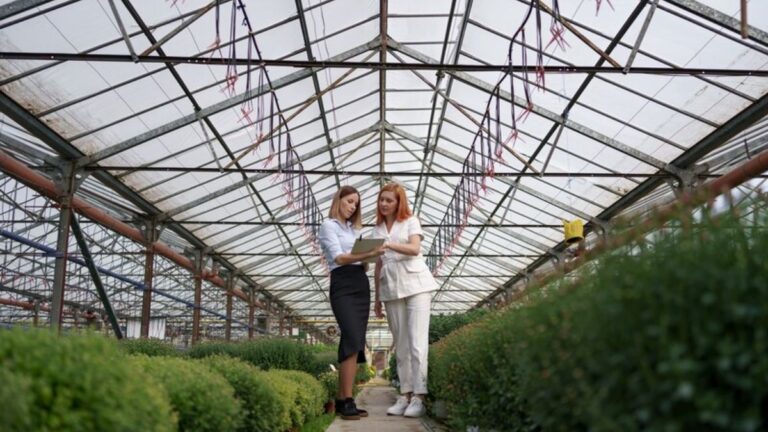The fundamental reason for carrying out controlled farming inside a greenhouse is to be able to manipulate climatic conditions artificially. Greenhouses create a microclimate that is almost independent of the natural atmospheric conditions.
Notably, there are many different ways in which experts classify greenhouses such as according to covering materials, and type of roof and overall structure.
This article focuses specifically on those commercial greenhouses that are classified according to their primary use. If we can dissect the purpose of our greenhouse, then we can completely change how we will utilize it.
In this article, we will discuss the types of commercial greenhouses available in the market based on their primary use.
Nursery Greenhouse
The same idea behind a kindergarten school (preparing young children for life) applies in the botanical world. Intrinsically, nursery greenhouses are the specially designed to create a serene environment for plants to start life.
If you have done some sort of gardening in the past, then you understand how delicate young plant shoots are. Hence, the young plants require specialized attention, the right greenhouse supplies, and conservative farming practices.
For example, plant seeds are planted directly in plastic bags containing fine and very fertile soil. The plastic bags will provide a safe carriage medium when the time comes for the all the germinating seedling to be transplanted.
With closely monitored humidity and temperature levels, nursery commercial greenhouses create the perfect conditions for germination. Furthermore, nursery greenhouses enable seedlings to thrive well after germination.
Vegetable Greenhouses
As the name suggests, vegetable commercial greenhouses are mainly used to grow vegetables such as cabbages and spinach. Most vegetable farmers battle numerous pests and diseases that are caused by uncontrolled environmental conditions.
For example, most cabbages attract cutworms in the early development stages; a few weeks after transplanting. As such, fending off the worms is a gruesome task in an outdoor plantation where climatic conditions are beyond your control.
In a greenhouse, all you have to do is raise the temperatures by a few degrees and the worms succumb to high temperatures. Furthermore, you may introduce organic pesticides like neem oil to get rid of the pests.
In general, vegetable greenhouses protect the crops against harsh weather conditions and help monitor plant growth. The sustainability of vegetable greenhouses allows you to supply vegetable produce all year round regardless of natural environmental factors.
Aquaculture Greenhouses
Contrary to what most people believe, greenhouses are also used for rearing animals and not just limited to crop production only. Inherently, aquaculture represent the innovative nature of the agricultural industry. The ability to combine greenhouse technology with fish farming is quite groundbreaking.
Research studies have shown that the rate of growth in fish is largely dependent on water temperatures. Since heating the water directly is not a sustainable way of maintaining an ideal growth environment, aqua farmers adopt the use of commercial greenhouses.
Surprisingly, combining greenhouse technology with fish farming ensures that you can maintain a steady supply of fish throughout the year. Additionally, aquaculture greenhouses cut the production cost in half, seeing that fish will mature in half the normal period.
Livestock Greenhouses
One of the biggest problems most livestock farmers face is keeping their livestock warm during winter. Take an example of a sheep farmer. Immediately the cold season kicks in, sheep are likely to contact respiratory diseases like pneumonia, often leaving fatalities.
Livestock farmers have taken this situation head on, and are determined to see their animals thrive throughout winter. The livestock greenhouses provide a warm and stable environment that protects your animals against cold. Resultantly, your animals stay healthy, comfortable, and productive throughout the cold season.
Horticultural Greenhouses
Fruits and flower are very delicate and require constant monitoring right from germination to harvesting. For many flower farms, controlling temperature, light, and humidity is vital for proper growth. Similarly, fruits thrive in warm climatic conditions.
Therefore, growing fruits and flowers ensures timely ripening and blooming respectively regardless of what time of the year it is.
Conclusion
A lot of studying and research is being done to help incorporate greenhouse technology in other agricultural fields. With rapid technological advancements we are seeing in the modern times, greenhouse technology may be the answer to the global food crisis.

